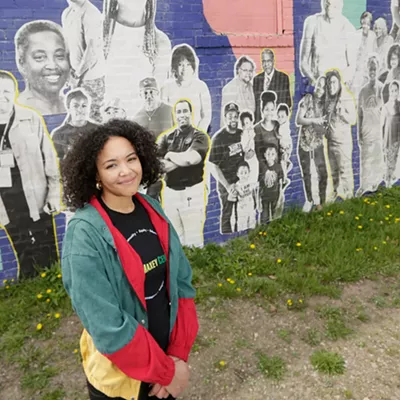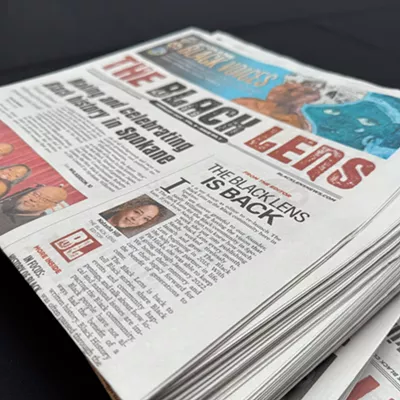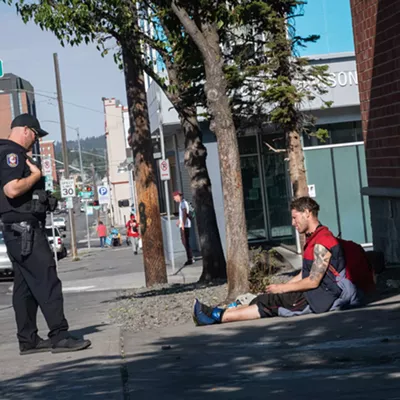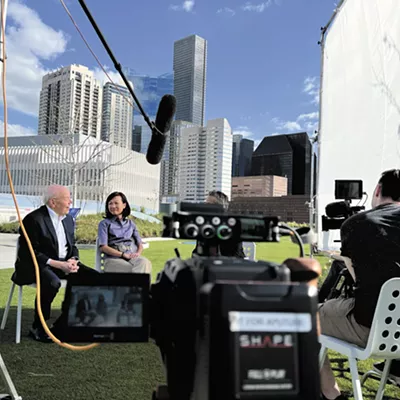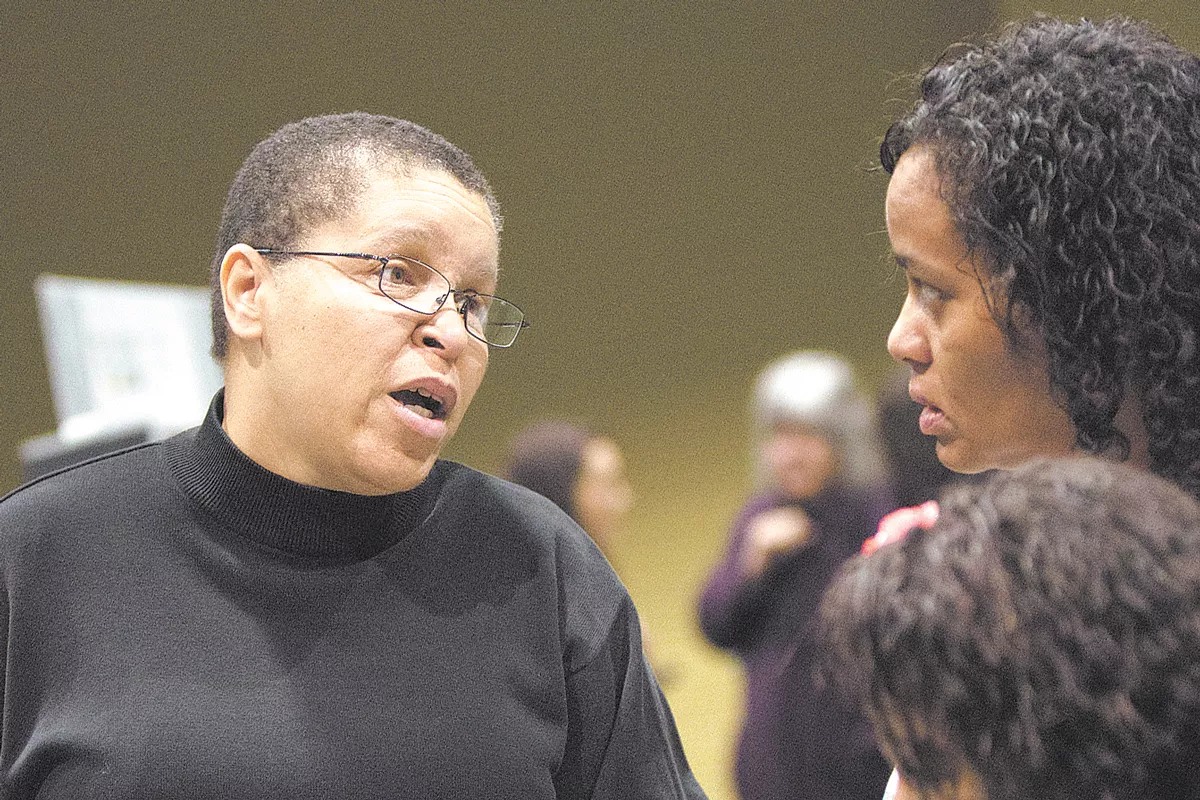
When I first read Sandy Williams had died, my brain immediately bounced to bargaining. A week of "magical thinking" in that stage of grief sounded akin to this: "Maybe I can convince myself that I missed her by mere minutes at the next community gathering where she was bound to be, most likely, escorted as always by her mother, Wilhelmina." "Perhaps I can will myself into believing that her lack of presence at some upcoming meeting was due to a prior commitment, probably one on the Westside." Knee-deep in plausible possibility and active avoidance, my head craved alternate realities for countless reasons.
Because Sandy was a friend, who put my heart and especially my thoughts at ease knowing she was in the world advocating for collective liberation. Because the Maxey Center, though already successful, still needed more time to blossom into her full vision. Because Sandy was a teacher, schooling us daily on the meaning of the word commitment — personifying lifelong advocacy for community and its advancement. Because she hadn't been able to make it to my wedding, and if I had known what would unfold, I would have petulantly demanded the universe deliver a do-over so I could catch a glimpse of her and Pat dancing. Because Sandy's cavernous well of institutional, historical, systemic, individual and neighborhood knowledge cannot just disappear. Because Sandy was a partner in scores of crucial projects at various stages of completion. Because this time death had crossed a line — far too f—-ing greedy, overreaching, grabbing up more than its fair share, and hitting way below the belt.
Each new loss piles atop the previous, compacting sorrow into a steep mountain of grief. And this loss is monumental.
So yes, in those first few days, I felt rather entitled to my irrational and inventive responses — negotiating a tolerable tale that could prevent pain and delay the impending despair and despondence. Thus, while I would normally post and commiserate, I stayed silent. While I would naturally comfort and offer condolences, I cocooned. I westernized my coping mechanisms — kept it moving and worked through it.
But those who know me well easily punctured the projections. Evidently, I was unwittingly signaling suffering. While I thought my silence read more peaceful, serene and placid, those closest to me saw it for what it actually was — steely, jagged and stony quiet. They warmly and gently nudged through calls, texts, check-ins and questions — consistently offering support. A week of magical reinforcement during that stage of grief sounded akin to this: "I'll take the day off work and stay with you," "Just checking in. How are you holding up," "I'll meet you at the memorial."
Ultimately my loved ones' sure footing was enough to persuade that grieving wouldn't end me — that it needn't be done alone or held at bay. Together, we faced the unfathomable — a new hill we must climb.
The moment I slowed to consider the sheer magnitude of this loss, emotion instantaneously brimmed over. Copious lip curling, nose-scrunching, eyes-screwed-shut crying commenced. In private and in public, I sort of quiet-wailed (especially at the Maxey Center Celebration of Life; thanks for the tissues, Maureen and Bridget). However, I have good news to report — apparently salty, steamy, snotty tears sliding down cheeks and shoulder-shaking sobs are superior to fiction. When I opened my heart to bereavement, well, the words, they started flowing and this is what I heard:
Grief is lost love's most direct means of expression. Our hollowing out serves as an aching and sentinel reminder of the privilege of being loved and impacted. The chasm left behind is a testament of true measure. Acknowledging the new reality is what allows for the possibility of continued connection — keeping alive her legacy.
So when the next edition of the Black Lens drops — sustainably funded and fostering new talent and voice — Sandy will be there.
In each started project we bring into fruition and in every promise we made to her fulfilled, we'll see her slight nod.
The moment our city permanently fills, funds and fosters real accountability through an Office of Civil Rights, I can assure you we'll hear the old spiritual refrain, "It's about damn time."
When knowledge rests squarely in the fingertips of East Central in the new Maxey Library, you can bet we'll get a glimpse of that small, smirky smile.
Every time a piece of SCAR's mission is accomplished, Sandy will stand beaming.
In the next community symphony pop-up or Black Violin performance, in equitable access to and the enjoyment of art — we can sense her presence.
When damaging horizontal oppression is quashed, I guarantee her rejoicing will be epic.
Hopefully this spring at the Black Owned Business Expo and voter drive, Sandy can rest feeling secure that the work she began continues.
In moments of Queer, BIPOC and, I say again, Blackity-Black-Black and ally excellence, she is bursting with Pride.
When the entire East Side is thriving, vibrant, appropriately resourced, well-appointed, repaired from the harmful freeway fracture, imbued with political agency and voice, she might be satisfied.
Through every success of her daughter, family, mentees or multiple communities, she remains.
In the finding, delighting, in the becoming, in being proud of who we are — as individuals and as a people — she celebrates alongside us.
When the Black Prisoners' Caucus receives its Pulitzer, Sandy may do a little dance.
In any equitable city ordinance, county budget appropriation, criminal justice reform bill passed, her hands will lay atop those who sign them into being.
With each authentic story of transformation captured and told, Sandy Williams stays with us. ♦
Inga N. Laurent is a local legal educator and a Fulbright scholar. She is deeply curious about the world and its constructs and delights in uncovering common points of connection that unite our shared but unique human experiences.





